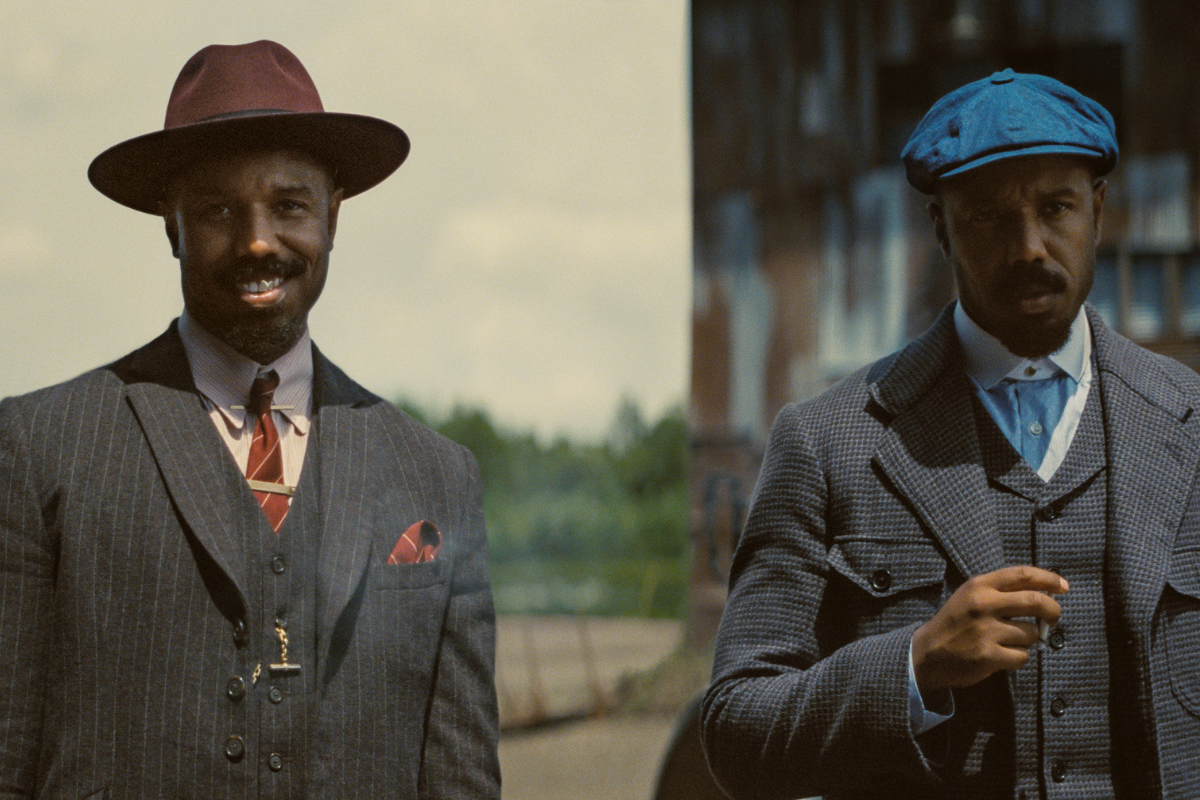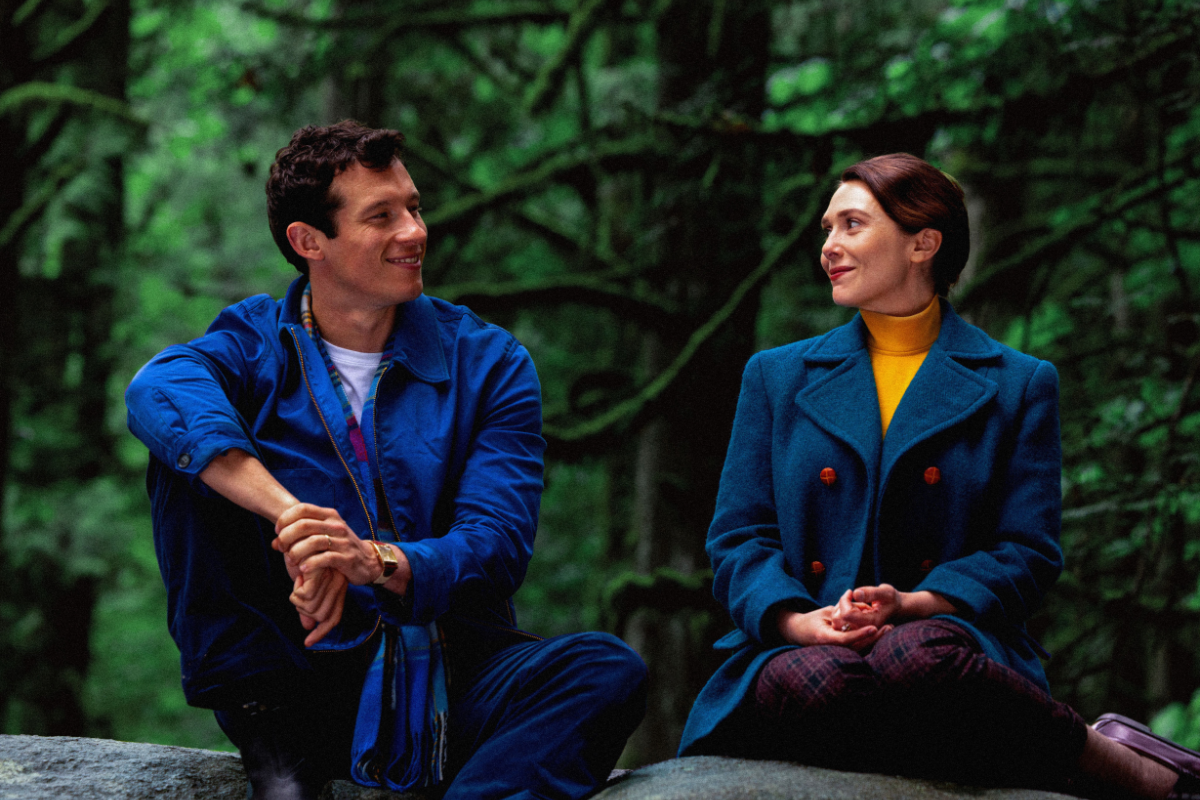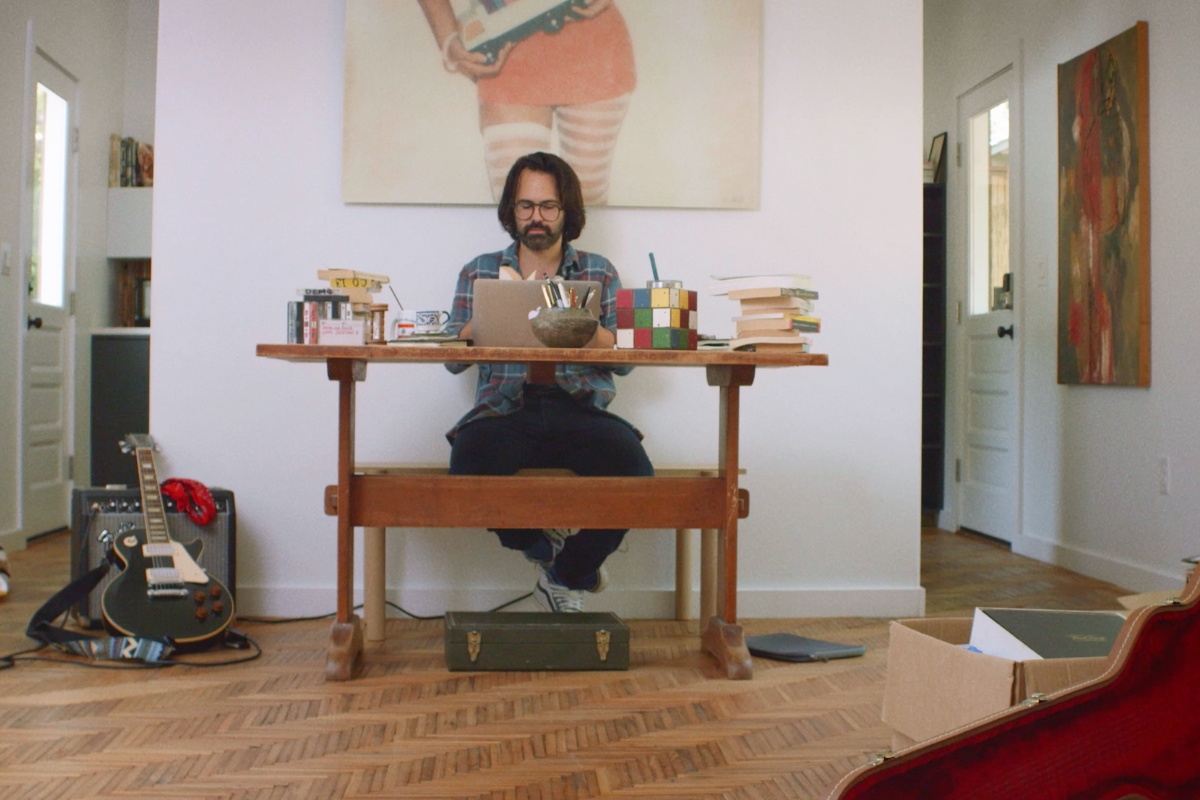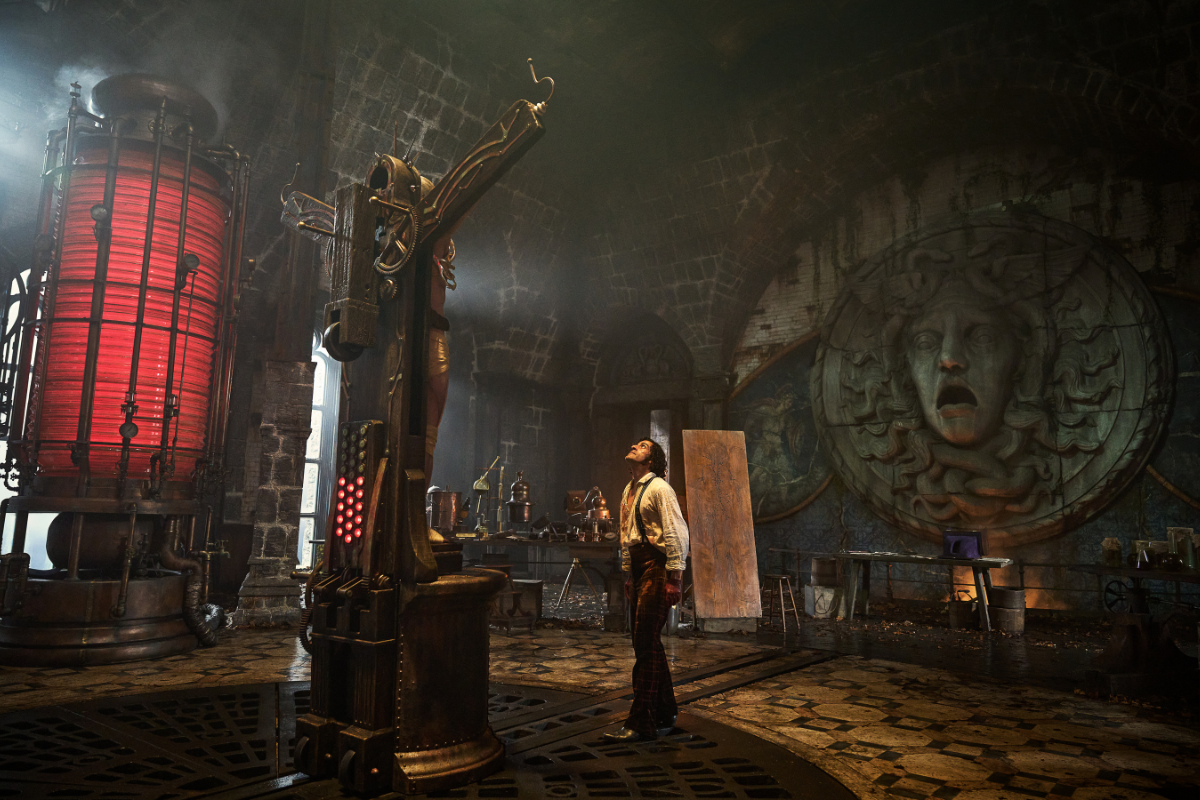THE CRAFT: Rewriting Tips – Writer Edit Thyself
Get rewriting tips on how to get past the first draft vomit and turn your screenplay into a fast-paced read audiences will love.
Originally published in Script magazine November/December 2009
Let’s lay everything on the line, shall we? Let’s have a no-holds-barred, pull-no-punches, brutal heart-to-heart about self-editing for screenwriters.
Hello, Script Readers. Are you sitting down? Good. Because we both need this talk, some of us more desperately than others.
Nothing irritates me more than the vanity of fellow writers and their precious first drafts, especially newbies who have read maybe one book, wrote two scripts, can’t take criticism, and think their shit doesn’t stink. I’m reminded of what Ernest Hemingway once wrote in a letter to F. Scott Fitzgerald: “The first draft of anything is shit.” Of course, while you have every reason to celebrate the completion of your brand-new work, you also need to acknowledge that your first draft does not merely have a few flaws. More than likely, it’s shit. Did you hear me? Your first draft is probably SHIT! How well you write your first draft is not the mark of a great screenwriter but rather, how well you handle your revisions and shape your story into greatness.
That art of effective rewrites and self-editing is what separates the amateurs from the pros.
John Michael Hayes wrote roughly 1,500 scripts for a wide variety of half-hour radio shows long before he ever wrote classics like Rear Window or To Catch a Thief for Alfred Hitchcock. Even then, he still struggled with excess dialogue and constantly revised his work. Michael Arndt composed over 100 drafts of Little Miss Sunshine before his film was ever greenlit. That’s 20 sets of revisions every year, about two a month, all of which went on for five years before production. Even then he was rewriting throughout the production and post-production. The final scene was written and shot eight weeks before Sundance. George Lucas had at least six page-one rewrites over the course of four years before we got the finished masterpiece that was Star Wars. I read his early drafts, too. Believe me, they were shit.
What do these examples mean? They mean you must gain perspective about the process as a whole and manage your emotions. You must be able to step back from your work as a whole and all the emotions that your own words make you feel when you read them in order to be objective about what works, what doesn’t, and the improvements you need to make.
Follow me. You sit down and start writing your story. You know the characters inside and out. You’re in a scene and you’re feeling the feelings of all the characters. That’s a good thing. Nothing wrong with it. However, some writers can get swept away and distracted by those feelings, and they assume the feelings of the characters they are feeling as they write the scene will also be felt by the audience. That’s deceptive, and may not be the case. The scene may not play well at all. You may not be capitalizing on the emotional potential of those scenes. So you have to be careful. You have to manage your emotions as you write a story and when you get feedback. You have to know the emotions of the characters, certainly, but you also need the discipline to step back and understand the emotion of the scene, have a feel for the rhythms and beats of solid drama, and consider how well it will play to audiences.
So, for example, I read a scene in which all of the characters are having a fun moment together. They’re getting along and feeling good and laughing. And the writer is feeling the happy feelings of those characters as he writes the scene. He assumes that the readers will also feel those same happy feelings. More than likely, they won’t, because a scene like that is static, has no conflict, no tension, no drama, and usually fails to advance the story in a substantive way. You may be feeling those happy feelings of the characters in that moment, but you need the discipline to know that this scene may not play well for all the reasons I just listed—and then cut it. This is not to say that you can’t have a scene like this, but you have to be damn careful. If your script is filled with scenes like this, you better believe your readers will be bored out of their minds because there’s no drama. I think a big pitfall for timid screenwriters is that they write a bunch of happy scenes and want the readers to feel happy and praise the writer, but all it does is put the readers to sleep. It takes conflict and drama to hold the attention of readers.
How you’re feeling when you’re writing your scenes and how the reader feels when he’s reading your scenes are, many times, totally different emotions, perceptions and experiences. If you’re anything like me, version one is just a “kitchen sink draft” filled with too many ideas and consideration has to be made as to what works, what doesn’t, and how the script should be whittled down to a more focused, manageable size. Oftentimes, so much research, time, thought and emotion went into the first draft that writers can lose objectivity regarding their own material. You have to manage your emotions, listen to your friends and the feedback you’re receiving, step back, and work hard to make the reader feel the emotions you want him to feel, which does not necessarily mean you will be feeling them as you write those scenes.
What have we accomplished so far? We finished our first draft. We celebrated. We acknowledged that our script is more than likely shit and needs heavy revision. We took a deep breath. We put in check our sometimes unintentionally subjective emotions, and we return to the script with fresh eyes. Before we even waste the time of our friends to gain feedback on our piece-of-shit first draft, we are going to do some serious self-editing. How do we do that?
Keep it Simple, Scribe
When it comes to screenwriting, I am a believer in the fine wine of beautiful simplicity. All writers worth a grain of salt will first ask themselves, “Do I have any fat in my script?” You know exactly what I’m talking about: scenes, descriptions and dialogue that go on for too long. You know it’s fat. You know it’s unnecessary. So exercise the power of line-item veto and cut the fat in your script so you will not be wasting anyone’s time. Fat comes in many forms:
Look at my pretty action lines. What do we know about action lines? The paragraphs should be four lines or fewer and contain only the most essential words. Yet, I’ve seen so many scripts with action lines intended to be the most gorgeous prose ever. You do not sell your scenes by your action lines. You sell your scenes by what happens to the characters in that scene—how it plays out. Only a minimum of words should be used to describe setting and action. I don’t even think complete sentences are necessary. The less you write, the more they’ll read.
Avoid incidentals. ’Tis better to err on the side of brevity than write volumes no one will ever read. I do believe that it’s part of the natural development of most screenwriters to become more minimalist in their action lines. We tend to be too detailed at first, looking at every scene too closely and describing the slightest gestures of the characters. The actors are not puppets. Despite rumors you may have heard, some of them are intelligent, and a rare few are brilliant. They do not need to have minor gestures explained to them just as we don’t need to read about them. The Nolan brothers didn’t have time to dilly-dally over minor gestures in that little script of theirs called The Dark Knight and neither should you. As Dave Trottier writes in his book The Screenwriter’s Bible, “If your character raises her cup of coffee to her lips, that’s not important enough to describe ... unless there’s poison in the cup.”
Setting isn’t everything. I hate to break this to you, but if a scene is inside a log cabin, I can easily picture what a log cabin looks like without needing much help from you. I have read some scripts where, God help me, each new location came with an elaborate paragraph describing every mind-numbing detail about that setting—the size of the room, all the furniture, where the furniture is located, the color of the drapes, etc. Are you writing for Martha Stewart? What’s the point of talking about chairs and furniture if the characters never use them? There’s hardly any point in describing much about the setting unless a) we’re given visual details that support or advance the story, such as a revealing framed photo, b) there’s something unusual about the location, or c) there’s an emphasis on the location in the story, à la The Money Pit. It’s where you choose to set your scene that’s important because the setting can, for example, define characters, support theme, and externalize conflicts, which should be obvious without explanation. Remember, the less you write, the more they’ll read.
This isn’t a fashion show. I have come across scripts where the clothes for all the characters are meticulously chronicled, which always brings to mind Bret Easton Ellis’ American Psycho. You’re not Patrick Bateman, are you? More often than not, the right decisions will be made about clothes in pre-production in a collaborative effort between a variety of people. I daresay that the only time descriptions of clothes might be warranted is when a) there’s something very unusual about what the characters are wearing, b) they’re in disguise, or c) there’s a focus on clothes in the plot, à la The Devil Wears Prada. The less you write, the more they’ll read.
Trim the transitions. If you have a character going on vacation to Italy, is it truly essential for us to watch that character pack luggage, check in at the airport, sit on the airplane, get off the airplane, collect the luggage, call a cab, check in at the hotel, and go to the hotel room? You may be feeling the same feelings of excitement as the character when you write those scenes, but your audience will be thinking, “This is boring. Why are we watching this?” Even worse, an overly long transition KILLS your pacing. When James Bond has to go to some remote part of the world, are we forced to endure such lengthy, detailed transitions? No. In the very next scene, he’s in that location doing what he does best. I’m reminded of an e-mail from a very dear friend who was a judge in a hugely popular screenwriting contest. She wrote:
Very few have an interesting premise AND strong dialogue skills AND a grip on pacing. If the writer has a coherent story and can write dialogue, then it’s pacing that makes or breaks the script. I’ve never been so conscious of the rate at which information is revealed before. I think it’s an area I’m weak in, so it’s a good lesson for me. I watched Tootsie again last week and am amazed how the first act works so economically. In one frame, Michael Dorsey is telling his agent, “You’re saying no one will work with me?” and in the next frame, he’s dressed as Tootsie on a NYC street. The audience didn’t need to see him shop for clothes, find a wig, get dressed, etc. We see him walking down the street dressed as a matronly woman and we do the math. (We know from the opening scenes that he’s good with props and costumes, we know there’s an opening on a soap opera for a woman, etc.) My tendency as a writer would be to show all of the in-between steps. So now I’m thinking about my own scripts in this light ...
Avoid repetition of information. Avoid repetition of information. Avoid repetition of information. Oh, and the less you write, the more they’ll read.
Set-up and payoff . Another way of eliminating fat is by looking at disconnects in terms of set-ups and payoffs. Are there details that surfaced in the story that don’t play out in the narrative? For example, does someone mention a gun in grandma’s cookie jar that we will not see and plays no part in the story? Cut the reference to the gun. As Anton Chekhov said, “If, in the first chapter, you say there is a gun hanging on the wall, you should make quite sure that it is going to be used further on in the story.” Plus, the less you write, the more they’ll read.
Enter late and leave early. This is one of the oldest adages in screenwriting (and playwriting before that). You, as well as the rest of the world, do not have time for chit-chat. Ask yourself with every scene, “Can I start this scene later?” “Are these comments necessary?” “What happens if I ended this scene a few lines earlier?” The less you write, the more they’ll read.
When a character says something funny, give the audience time to laugh. This is one of my biggest pet peeves with new comedy writers. A character tells a joke and keeps talking, which the audience will not hear if they are laughing. Cut the fat. Get to the joke. Make the trigger word of that joke the last word in that line of dialogue.
Stay focused on theme. Before you ever sit down to write your script, I should hope that you know what your theme is because that is essential in determining what goes and what stays. Theme is not a tired cliché, like “time heals all wounds.” Theme is an engaging question: “If your brother slept with your wife, could you forgive him? Ever?” Thus, theme is how you know you’re bird-walking too far away from your story. With the brother-sleeping- with-your-wife scenario, you know that a subplot involving a mother fulfilling her dreams to open her own cookie dough store is probably fat that should be cut. Why? It does not support your theme of forgiveness. If you’re having to ask yourself a question that sounds like, “I know this is kinda off the track, but it’s funny/entertaining/interesting,” that means you must cut it. The question you should be asking is “How best can I support my theme in the context of this story?”
Oscar®-caliber Trimming. Here’s a lovely example of a revised scene in Alan Ball’s American Beauty. This comes early in the script when everyone leaves for work and school:
INT. MERCEDES-BENZ ML320 — A SHORT TIME LATER
Carolyn is driving; Jane stares out the window. Lester is asleep in the back seat. Clint Black sings “Desperado” on the stereo.
JANE
Why are we listening to this whiny-ass music?
CAROLYN
It’s just what was on.
Jane fiddles the tuner, searching for another station. Something suddenly catches Carolyn’s eye:
Her POV: An advertisement on a bus stop bench shows a slick looking, silver-man smiling a toothy smile. It reads:
"Leonard Kane -- The Real Estate King -- Rockwell’s Highest Sales Record Three Years Straight."
We recognize him as the man seated next to Carolyn in court during Jane’s trial.
Carolyn glares at the advertisement as she drives past. It obviously bothers her.
JANE
I don’t see how you people can listen to
that hillbilly crap. It makes me
want to buy a gun and shoot up a Burger King.
CAROLYN
Well, your father was the last one to
drive this car. You know I don’t
like country music myself.
It’s so ... common and twangy.
I much prefer the old standards:
Sinatra, Bobby Darin, Doris Day ...
Jane finally finds a station she likes: moody alternative rock. They drive along without speaking for a moment, then:
JANE
Wake up, Dad, we’re here.
No response from Lester.
JANE
(cont’d)
Dad, look. It’s Garth Brooks,
and he’s wearing that groovy
cowboy hat. Maybe
you can get his autograph.
CAROLYN
(chuckling)
Jane. Hush.
This discussion about music, while okay as dialogue goes, plays no part anywhere else in the narrative. This is a set-up without a payoff . We will know that Carolyn loves Bobby Darin simply by the fact that we will see her listening to him later. We don’t need to have those feelings verbalized to us. The scene is just a bit too long for what should be a quick transition to new locations. And, for me, the biggest reason for change here is that the conversation between Carolyn and Jane took us a bit too far away from the focus on Lester and the bigger point of his voiceovers throughout the beginning, which was to punctuate theme.
Thus, Alan Ball shortened his scene to the beautiful simplicity of this final version:
INT. MERCEDES-BENZ ML320 — A SHORT TIME LATER
Carolyn is driving; Jane stares out the window. Lester is asleep in the back seat.
LESTER (V.O.)
I have lost something.
I’m not exactly sure what it is,
but I know I didn’t always
feel this ... sedated.
But you know what?
It’s never too late to get it back.
Remember, dear readers, your first draft is shit. You must manage your emotions and dispassionately self-edit. Because the less you write, the more they’ll ... well, you know.
- More articles by Mystery Man
- Behind the Lines with DR: Dogfights and Rewrites with George Lucas
- Jeanne's Screenwriting Tips: Polishing a Screenplay
Get more tips in Heather Hale's on-demand webinar
Rewrite Tips to Make Your Script Marketable







